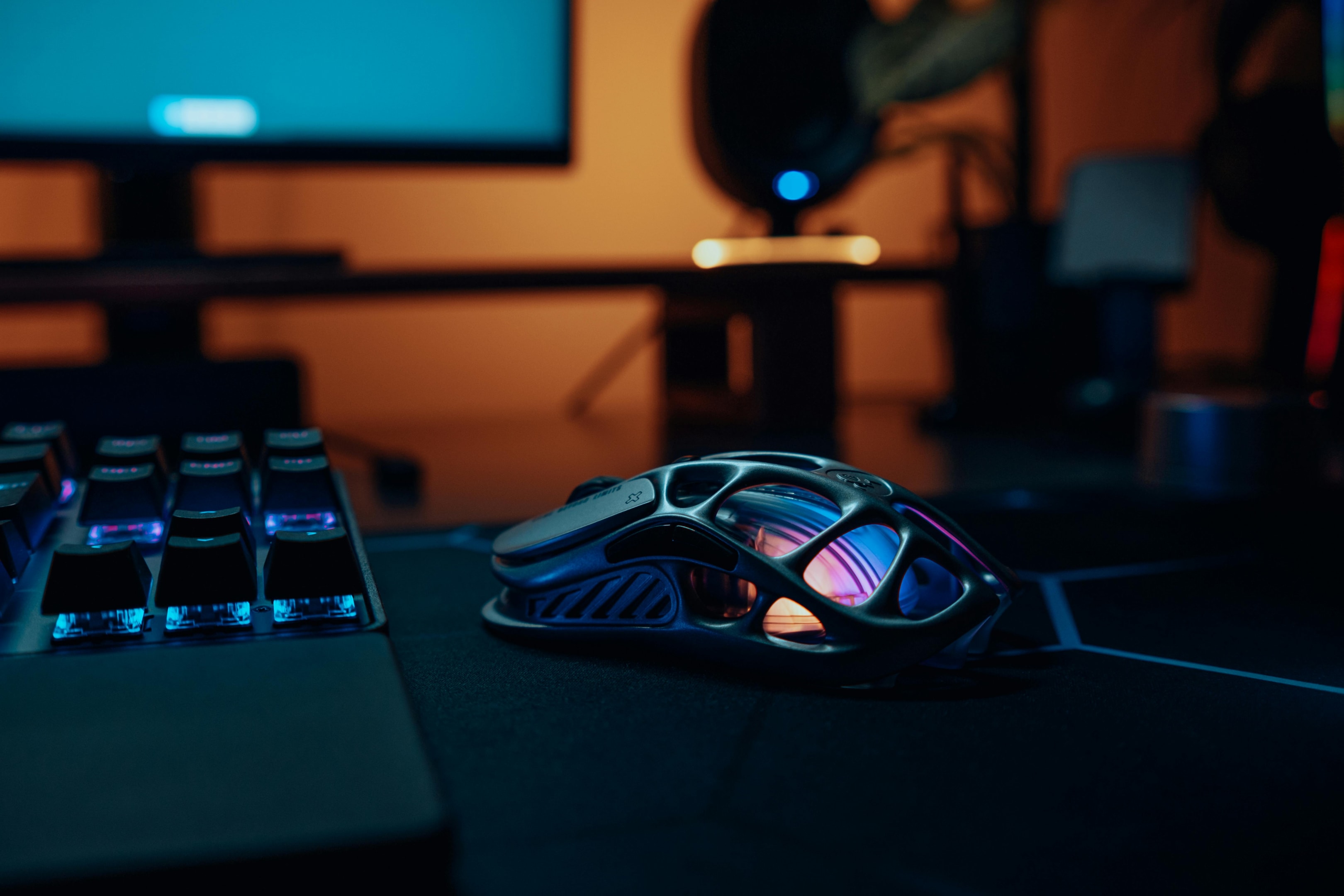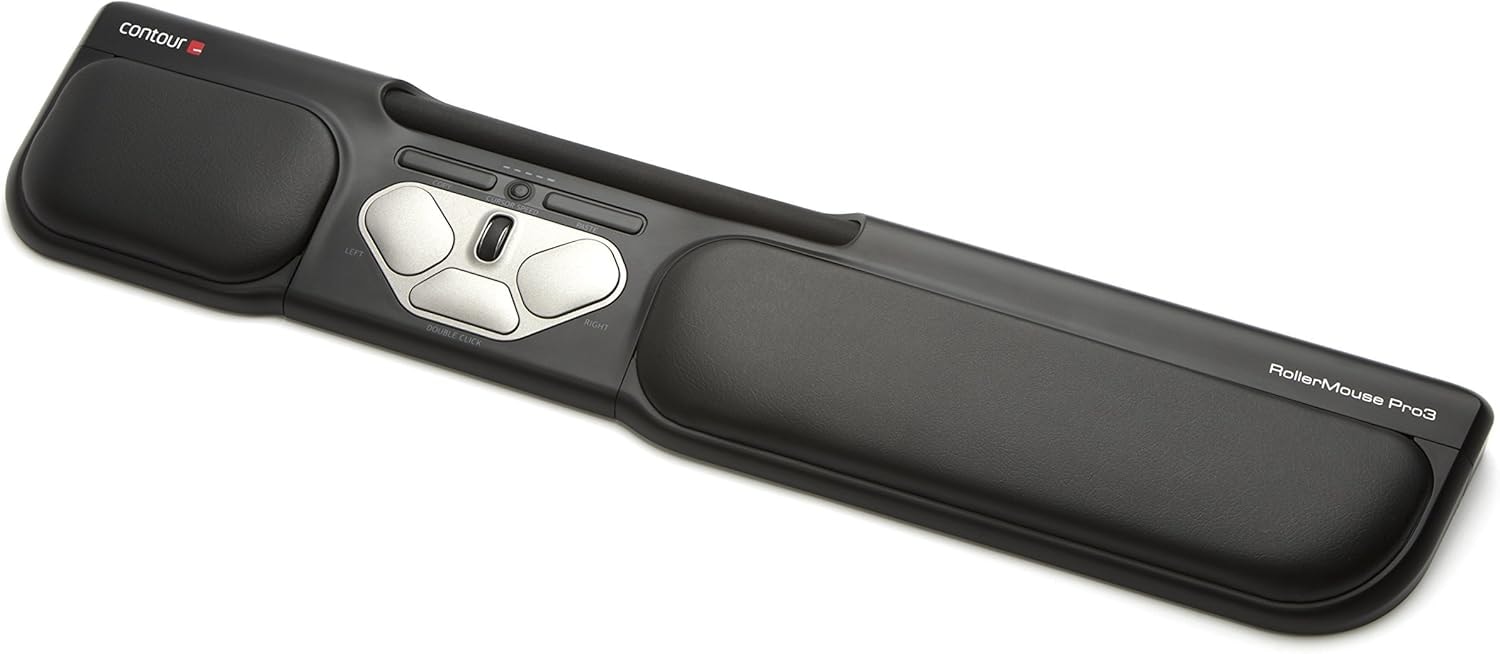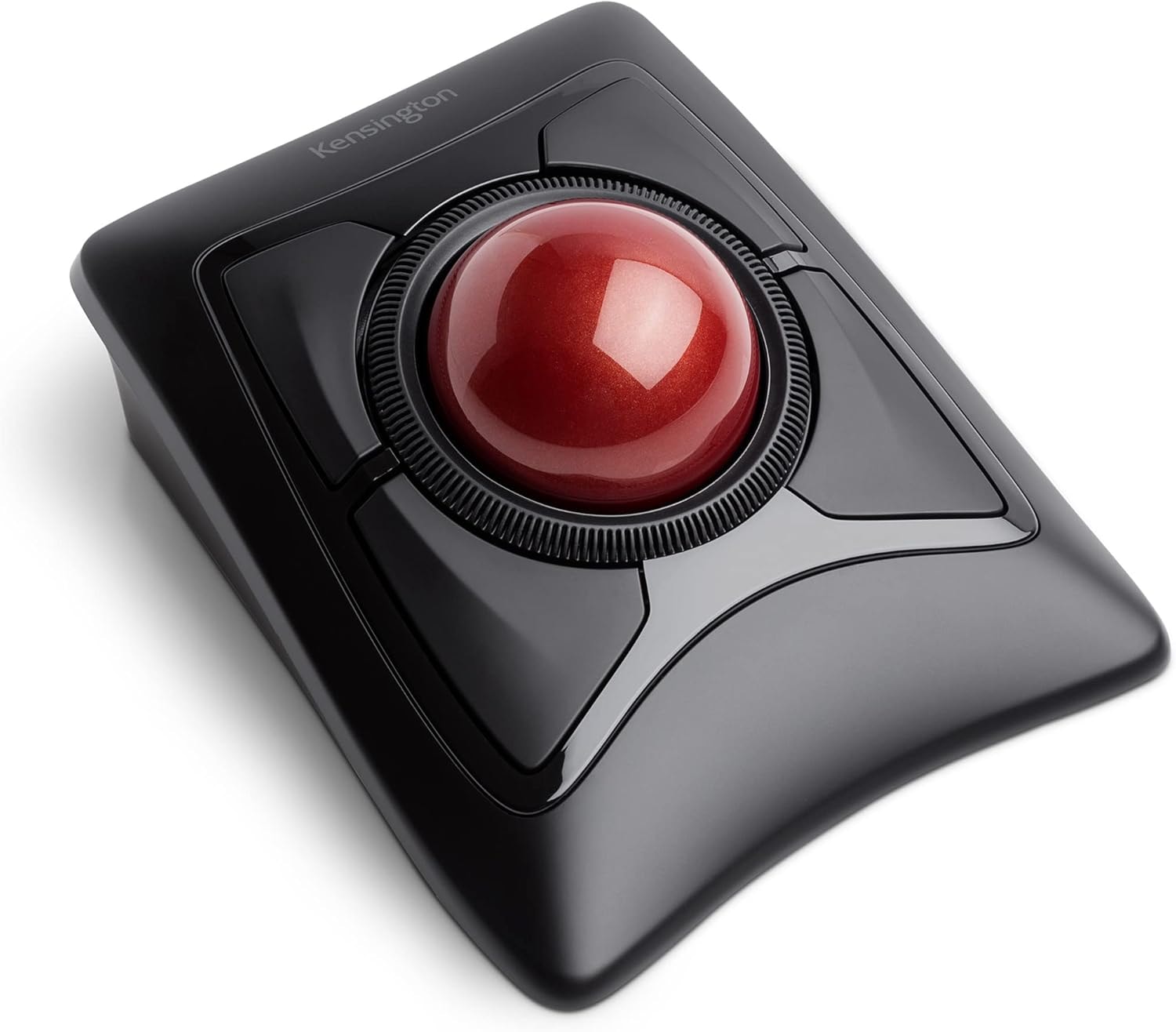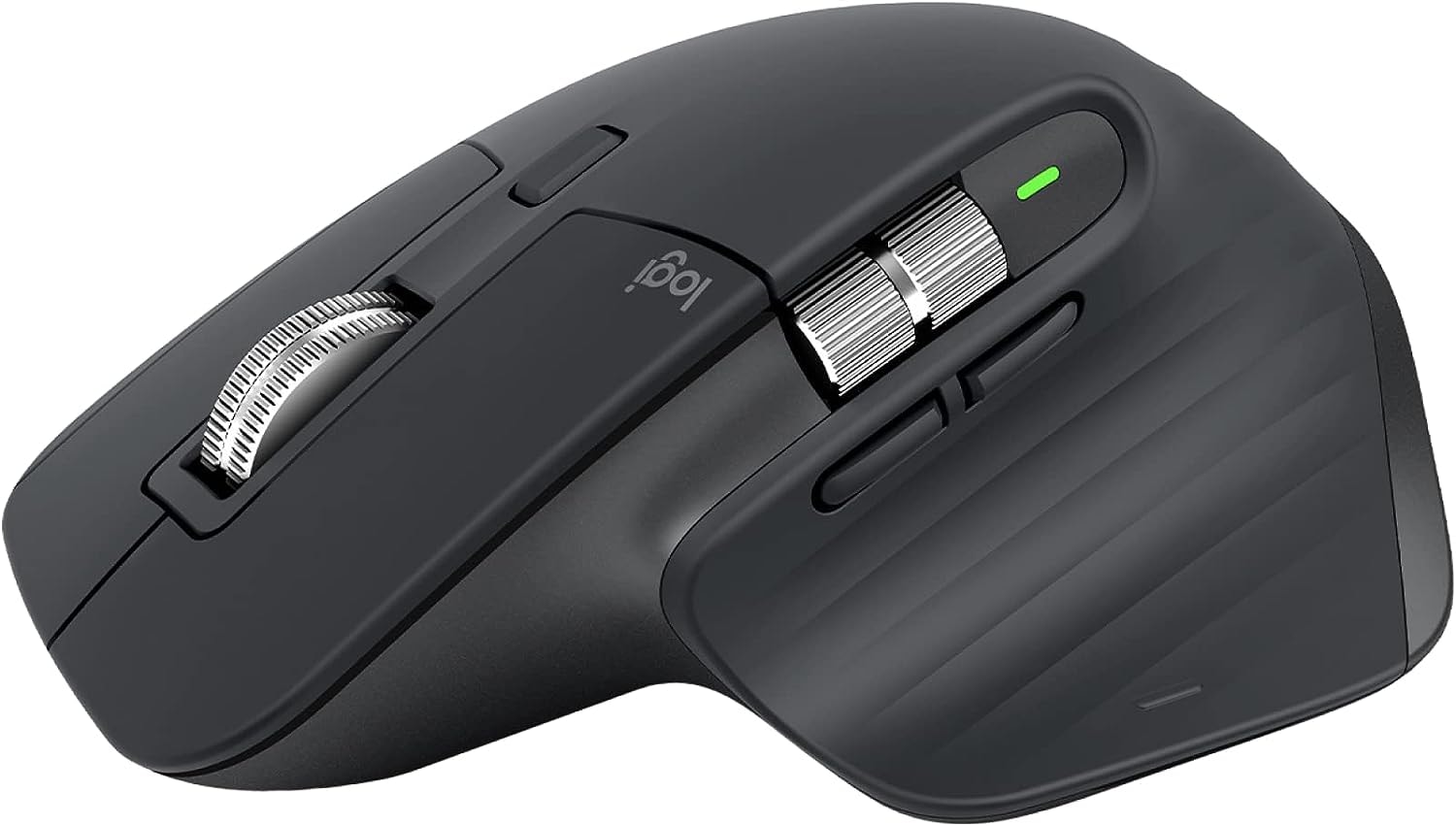Vertical mice are excellent for wrist, elbow, and hand health. The upright shape allows your hand to stay in a natural angle for the human hand, which lessens strain, prevents carpal tunnel, and allows you to work without hand fatigue.
What are ergonomic mice?
Ergonomic mice are designed to reduce strain and improve comfort during prolonged computer use by allowing your hand, write, and arm to rest at a more natural angle.
Traditional mice can cause issues like repetitive strain injury (RSI) or carpal tunnel syndrome, especially if used over extended periods without breaks. Take breaks!
Ergonomic mice aim to minimize those risks, designed to better fit the human body’s natural posture.

Why use vertical mice?
A vertical mouse is designed to keep your hand, wrist, and forearm in a more natural “handshake” position, offering several advantages.
1. Reduced wrist pressure
The vertical orientation minimizes the forearm twisting (pronation) required by a traditional mouse, which can help prevent or alleviate repetitive strain injuries like carpal tunnel syndrome.
2. More natural position for your whole body
Your arm maintains a more relaxed, natural position, reducing muscle strain in your forearm, shoulder, and neck.
3. Improved circulation
The neutral wrist position may promote better blood flow compared to the twisted position required by standard mice.
4. Pain management
Users with existing wrist pain or conditions like RSI (Repetitive Strain Injury) often report decreased discomfort when switching to a vertical mouse with ergonomic design.

Decreasing your daily discomfort reduces lasting pain, joint issues, and stress, while enhancing your productivity.
Drawbacks for ergonomic mice
- Initial adjustment period as you get used to the different grip
- May be less precise for detailed work like graphic design (though this improves with practice, and there are many mice that make you more precise almost immediately)
- Often more expensive than traditional mice
- Can be bulkier and less portable
Vertical mice are particularly beneficial for
- People who use computers for extended periods
- Those with existing wrist pain or ergonomic concerns
- Office workers looking to prevent potential repetitive strain injuries
- Anyone interested in optimizing their workspace ergonomics
What kind of computer mouse should you use?
There are a surprising amount of mouse styles on the market, so you can cater to nearly any problem you might be experiencing with your current setup. Write pain, finger fatigue, muscle or joint strain from prolonged use… Here’s how you can narrow it down a bit.
1. Wrist pain?
A vertical mouse (best vertical mice listed below) is often the best option if you’re dealing with wrist pain. It allows your hand to rest in a neutral, handshake position, which greatly reduces strain on your wrist and forearm.
Straightening out one part of your body, like your wrist, can have a ripple effect through your whole body, allowing for better posture overall.
Examples: Logitech MX Vertical, Anker Ergonomic Vertical Mouse, Evoluent Vertical Mouse
2. Want to minimize movement?
If you want to minimize the movement you have to make throughout the day–maybe you have a job that requires you to do a lot of stuff quickly–then a trackball mouse can help. The ball is rotated with your fingers or thumb to move the cursor, eliminating the need to move your wrist nearly at all.
Examples: Logitech MX Ergo, Kensington Expert Mouse, Elecom Trackball Mouse.

3. General ergonomics?
A mouse with a contoured shape that fits naturally into your hand can be a good upgrade if you just want better hand support without dramatically changing how you use a mouse. These mice often include extra thumb support and customizable buttons without being too difficult to learn.
Examples: Logitech MX Master 3, Microsoft Sculpt Ergonomic Mouse.
4. Tiny workspace?
Compact or wireless ergonomic mice might be more your speed. If your desk is limited, or you’re constantly on the move, a compact ergonomic mouse will suit you best.
Examples: Logitech M570 (Trackball, wireless), Anker 2.4G Wireless Vertical Mouse.
5. Graphic designer looking for precision?
If you perform a lot of precise actions, a pen tablet might be better than a mouse period. It mimics at real pen, giving you that precise control, plus some ergonomic benefit.
Note: The ergonomics of this will vary. It’s just as easy to strain yourself if you overuse a pen tablet, so be sure you take regular breaks, no matter how ergonomic your setup.
Examples: Wacom Intuos, Huion Tablets.
6. Shoulder/upper arm pain?
The RollerMouse is your guy! It sits directly in front of your keyboard, operated by rolling a central bar. This eliminates the need to reach for a mouse, reducing strain on your shoulder and arm. A more upright posture can do a lot to alleviate pain in these areas.

Examples: Contour RollerMouse Red.
7. Want to minimize finger movement?
A joystick mouse allows a more natural grip to reduce strain on your fingers and forearm. This is great if you find you have hand cramping or specifically finger strain.
Example: 3M Ergonomic Mouse.
Additional Considerations
Grip Style
Do you prefer a palm grip, claw grip, or fingertip grip? Choose a mouse that supports your preferred grip style. Your favorite grip style might not be a grip at all–maybe you’re better with a roller or pad.
Desk Setup
Consider the height and angle of your desk. An ergonomic mouse paired with proper desk and chair height can greatly reduce strain, but if you’re sitting cockeyed and can’t even twist your arm up into its natural angle, a vertical mouse would be ultimately useless. (Fix your desk before you give yourself scoliosis xoxo)
Mobility
If you travel a lot (or work from a tiny desk), wireless or compact options might be better for portability.

Customization
Some mice come with programmable buttons and sensitivity settings, which can be handy for both productivity and gaming. If you do something that requires lots of tools, like video editing, you’ll probably want a mouse with lots of customizable buttons.
So what’s the best vertical mouse for you? Here are five of what I believe to be the best ergonomic mice on the market right now.

Best Bang For Your Buck Mouse
Lekvey Ergonomic Mouse
I’ve had this mouse since 2021, and I’ve been happy enough to keep it for this long! I have noticed the battery life wears overtime, but I still only charge it maybe once a month, which is fantastic for the price. When it’s closer to needing a recharge, the tracking quality drops.
But again, I’ve enjoyed using it for three years, including for video editing, and that’s pretty good performance for under $30. I have used it on both macOS and Windows with no discernible difference between the two.

Pros for Lekvey Ergonomic Mouse
- Comfortable
- Wireless with wired capability
- Rechargeable
- Affordable and long-lasting
Cons for Lekvey Ergonomic Mouse
- Iffy tracking
- Slightly dubious connectivity later in life (usually when it’s close to needing a recharge)
Most Comfortable Ergonomic Mouse
Logitech Lift Vertical Mouse
This mouse offers more thumb support than the Lekvey, and I’ve noticed fewer tracking issues. However, you might get some clicking inaccuracies with the Logitech.
This mouse is best for users with small hands. With larger hands, you might notice difficulty navigating the buttons.

Pros for Logitech Lift
- Comfortable
- Extra thumb support
- Strong Bluetooth connection
- Connect three devices at once–swap between with a button on the bottom of the mouse
- Great pointer speed
Cons for Logitech Lift
- Iffy clicking
- Might feel a bit small for large hands, so keep your hand size in mind
- Long-term users noticed less responsive buttons after about a year
Most Affordable Ergonomic Mouse
TECKNET Ergonomic Mouse
If you’re looking for the most affordable option, you won’t find much better than this TECKNET. There are some drawbacks, like this one is not rechargeable.
For me, recharging is a must. According to customers, the battery can last from one month to several months.

Pros for TECKNET ergonomic mouse
- Good grip–fits my hand perfectly
- Soft feel
- Auto shut-off on idle
- Affordable
Cons for TECKNET ergonomic mouse
- Not rechargeable (2xAAA batteries required)
- Faulty “on” light, reported by several users
Coolest Ergonomic Mouse
ProtoArc Vertical Mouse
This mouse is unique in its shape, and that gives it an interesting look. If you want something cool to put on your desk, this might qualify.
That shape, however, does make it a bit clunkier to handle, so if you have small hands, you might want to stay away from this one.
This mouse is best for users with large hands.

Pros for ProtoArc vertical mouse
- Looks sick
- 3 connection options
- Soft click buttons
- Comfortable
Cons for ProtoArc vertical mouse
- A bit awkward to handle, especially for smaller-handed users
Best Vertical Mouse
The most ergonomically ergonomic, ykwim?
Evoluent VMDM VerticalMouse
If you’re new to vertical mice, the Evoluent might be awkward to get the hang of. But if you’re comfortable with the general shape already, this is the more ergonomic mouse due to being straight up and down.
With the wideness of the base, it is more difficult to lift and drop. If you only slide, this is a great mouse.

Pros for Evoluent VMDM vertical mouse
- Wired or wireless options
- Very ergonomic
- Easily reachable buttons
- Available in multiple sizes
Cons for Evoluent VMDM vertical mouse
- Could be bulky, depending on mousing style
- Buttons feel slippery for users who prefer a matte texture
Each of these mice has its particular strengths for unique user preferences, but any of them should serve you well!
Alternatives to vertical mice
If the vertical mouse isn’t for you, here are some ergonomic alternatives you can try instead.
1. Trackball Mouse
A trackball mouse stays stationary, and you control the pointer by rotating a ball with your fingers or thumb. This solution reduces wrist movement, which can alleviate strain and finger fatigue.
Some popular models include the Logitech MX Ergo and the Kensington Expert Mouse.

2. Pen Tablets
Drawing tablets like those from GAOMON allow you to use a stylus, offering a more natural hand position and mimicking the way you would hold a pen.
It’s a good option for people who want precision and a different hand motion than a typical mouse.

3. Ergonomic Joystick Mouse
Devices like the ZLOT Vertical Gaming Mouse use a joystick-style grip, allowing your hand to rest in a more neutral position, which can be a comfortable alternative to a traditional vertical mouse.

4. Touchpad
External touchpads, such as Apple’s Magic Trackpad, can also be an alternative. It’s one of our company favorites, so big recommendation if you use Apple products.
They allow multi-touch gestures, and because there’s no gripping involved, it can be easier on your hands and wrists.

5. Contoured Ergonomic Mice
Some ergonomic mice, like the Logitech MX Master series, are designed with a more natural hand position than traditional mice but without the vertical design.
These often provide good palm support and may suit people who want something in between a traditional and vertical mouse.

All in all?
There’s a wide range of needs for computer users, and there’s an equally wide range of mouse styles!
My personal favs are the RollerMouse, TECKNET, and Magic Trackpad. Which ones have you tried?
Check out theseideas to create your best ergonomic and productive office setup.
Vertical mice are excellent for wrist, elbow, and hand health. The upright shape allows your hand to stay in a natural angle for the human hand, which lessens strain, prevents carpal tunnel, and allows you to work without hand fatigue.
3 Comments